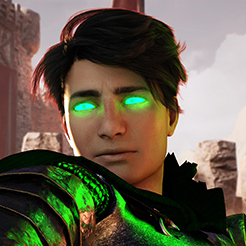In this series, I dig a little deeper into the meaning of psychological terms. This week's term is seasonal affective disorder.
Seasonal affective disorder (SAD) is a subtype of depression or bipolar with symptoms that occur based on a seasonal pattern. It was first described in 1984 as the result of an American study of mostly bipolar patients.
Typically, depressive symptoms occur during the winter, but other patterns are possible. For example, depressive symptoms may appear in the spring, or anxiety symptoms may show up in the summer.
Symptoms
The potential symptoms of SAD are the same set of symptoms that can occur with other types of depression. However, winter depression tends to be more likely to be associated with atypical depressive symptoms like oversleeping, increased appetite, and weight gain.
People with bipolar disorder who have a seasonal element to their illness may be diagnosed as bipolar I or II with seasonal pattern. Seasonal fluctuations are more common with bipolar II than bipolar I. Spring and summer may trigger the onset of mania or hypomania. Among people who have spring/summer onset of depressive symptoms, they're more likely to experience typical depressive symptoms like insomnia and decreased appetite.
About 70% of people with depression have worsening during the winter, but to actually get the diagnostic specifier of seasonal features, the symptoms must be absent at other times of year.
Prevalence
The risk for SAD increases at higher latitudes. Approximately 6% of Americans experience SAD, while around 14% experience seasonal dips in mood that don't meet the full diagnostic criteria for a depressive episode. One survey found that 20% or Irish people experience SAD.
SAD is about four times more common in females than males. In terms of age, risk increases with age up until the mid-50's, and then drops off after that.
Potential causes
The exact cause of SAD isn't clear. There's some indication that there's a genetic component, with genes related to circadian rhythm maintenance or retinal sensitivity to light playing a potential role. People who experience SAD appear to have difficulty shifting their circadian rhythm to match the changing light conditions.
Changes in melatonin production by the pineal gland in the brain due to lack of light may play a role. Melatonin is a precursor to serotonin, and serotonin is thought to play a key role in SAD.
Vitamin D deficiency related to lack of light may also play a role, but this hasn't been determined conclusively.
Some research has shown that almost 1/4 of people with SAD also have a personality disorder. While the disorders and their causes are distinct, it may be that there is a personality component that contributes to risk for SAD.
Treatment
Light therapy is a commonly recommended strategy for managing seasonal affective disorder. In terms of medication, the SSRI antidepressants and fluoxetine are commonly used. Bupropion has been approved for the prevention of depression with seasonal features; treatment is initiated in the fall before depressive symptoms set in, and it's continued until the spring.
Getting regular exposure to outdoor light (even on cloudy days) and physical activity may also be helpful.
While vitamin D supplementation seems like an obvious choice, research results haven't supported that.
Light therapy
Light therapy one option that can be effective for treating SAD, although research findings have been mixed. Some studies have shown that it's approximately equal to SSRIs in effectiveness. There should start to be some positive effect within a few days. If there's no benefit after two weeks, longer exposure may be needed.
Light boxes emit fluorescent light and come in different intensities, measured in lux. Using a 10,000 lux light box would require half the amount of time as a 5000 lux box to get the same effect. Lights can be cool-white or broad spectrum. Dawn simulators may be helpful for sleep and circadian rhythm, but for SAD, they're not as effective as a light box.
The typical recommended time for depression is 30 minutes for a 10,000 lux light box. For bipolar, a shorter amount of time may be better. You should sit 30-60 cm (about 1-2 feet) away from the box, at an angle that allows the light to shine in your eyes without staring directly at it. Getting the light in your eyes is more important than getting it on your skin, which is the opposite of how light boosts vitamin D production. Treatments should be done soon after waking up in the morning.
Getting personal
I live on the wet west coast of Canada, just north of the 49th parallel. The biggest issue in the winter here is that it rains a ton, so the sun doesn't make an appearance very often. While I find cloudy vs sunny days make a transient difference in my mood, winter doesn't seem to affect my symptom patterns overall. However, since early on in the course of my illness I've had a consistent seasonal pattern of a major drop in mood starting in late August and lasting through September. Regardless, I wouldn't fit the seasonal features specifier, since my illness shows up at all times of year.
I have a light box that I sometimes use in the winter, but I don't notice much of an effect from it. I actually prefer the warm glow of my Himalayan salt lamp; it's not the right kind of light to have the benefits of a light box, but I find it soothing, which is not the case with my cool-white SAD light.
Has seasonal affective disorder been an issue for you? If you have depression or bipolar disorder, do you notice any typical seasonal variations in your symptoms?
References
You can find the rest of the what is... series in the Psychology Corner.



No comments:
Post a Comment